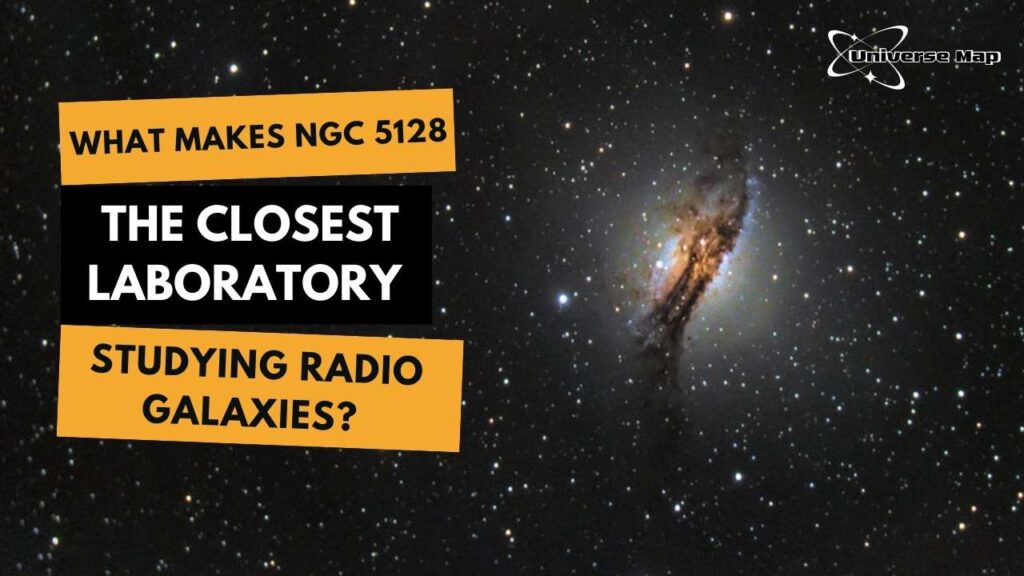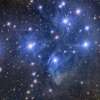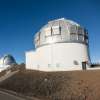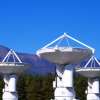
When astronomers want to understand how radio galaxies work—how they launch jets, feed black holes, and interact with the cosmos—they look for a model they can study up close. That model is NGC 5128, more famously known as Centaurus A. Located just 12 million light-years away, it is the nearest powerful radio galaxy to Earth, and arguably the most accessible natural laboratory for high-energy extragalactic physics.
In this series, we explore why Centaurus A is so critical to astrophysics—and how its unique combination of proximity, activity, and complexity makes it the perfect case study for understanding galaxies that roar across the universe.
Meet Centaurus A: The Radio Galaxy Next Door
Centaurus A isn’t your average galaxy. It’s a peculiar elliptical galaxy bisected by a dark dust lane—the remains of a spiral galaxy it consumed in a past merger. At its center lies a supermassive black hole powering twin jets that shoot out plasma at nearly light speed.
Why It’s Unique:
- Distance: ~12 million light-years—very close on cosmic scales
- Type: Hybrid elliptical + disk with AGN activity
- Radio Emission: Among the brightest in the entire sky
- Multi-wavelength visibility: Observed from radio to gamma rays
Conclusion: Its closeness allows us to study a powerful radio galaxy in unprecedented detail across all wavelengths.
Why Proximity Matters in Extragalactic Astronomy
Most radio galaxies—like those in the Virgo or Coma Clusters—are hundreds of millions of light-years away. At those distances:
- Small-scale structures blur together
- Jets and lobes are visible, but not resolvable in fine detail
- It’s difficult to trace jet-gas interaction, star formation, or black hole behavior precisely
But with Centaurus A, proximity enables:
- High-resolution imaging (Chandra, Hubble, ALMA, VLA)
- Detailed motion tracking of gas, stars, and jet structures
- Direct measurement of the black hole’s feeding and feedback cycles
A Galaxy Visible Across the Spectrum
NGC 5128 is one of the few galaxies studied in full-spectrum astronomy:
| Band | Instruments | Reveals |
|---|---|---|
| Radio | VLA, ATCA | Jets, lobes, synchrotron structures |
| Infrared | Spitzer, JWST | Star-forming regions, warm dust |
| Optical | HST, ground telescopes | Dust lane, globular clusters, shells |
| X-ray | Chandra, XMM-Newton | AGN variability, jet heating zones |
| Gamma-ray | Fermi | High-energy particles, cosmic ray sources |
This broad coverage allows multi-layered modeling, unavailable for most distant radio galaxies.
Watching a Black Hole Feed in Real Time
Centaurus A (NGC 5128) offers something no distant radio galaxy can: the ability to watch active galactic nucleus (AGN) behavior unfold in real time. Because it’s just ~12 million light-years away, astronomers can observe small-scale changes in the accretion disk, jet activity, and emission variability on human timescales—something nearly impossible with galaxies hundreds of millions of light-years away.
This part explores how proximity transforms our understanding of AGN physics, letting us monitor a supermassive black hole as it feeds, ejects, and fluctuates.
The AGN at the Heart of Centaurus A
At the center of NGC 5128 is a ~55 million solar mass black hole, actively accreting gas and ejecting jets. It is classified as a low-luminosity radio-loud AGN, meaning it’s less radiant than quasars, but extremely powerful in mechanical energy.
Why It’s Important:
- Nearby = higher resolution
- Variable X-ray and radio core = ideal for timing studies
- Accessible to multiple observatories = 24/7 coverage potential
🛰️ This makes Centaurus A one of the few AGN cores we can repeatedly observe in detail across time, wavelength, and scale.
Observational Breakthroughs Enabled by Proximity
| Observatory | What We’ve Learned |
|---|---|
| Chandra (X-ray) | Detected brightness changes in the accretion zone within months or years |
| ALMA (mm/sub-mm) | Traced cool gas inflows and turbulent motion near the AGN |
| VLA (radio) | Mapped changing jet knots and inner structures in the jets |
| Hubble (optical/IR) | Imaged stellar clusters near the core; studied jet-induced star formation |
🔬 These high-resolution, time-sensitive observations are only possible because Centaurus A is so close.
Tracking Jet Variability and Motion
Because the jets are visible down to their launch point, astronomers can measure:
- Jet angle and orientation changes
- Movement of individual plasma blobs (knots)
- Brightness variability from shocks and magnetic instabilities
- Interaction zones where jets meet gas clouds
This kind of jet kinematics and morphology tracking helps us test theories of:
- Jet collimation and stability
- Black hole spin effects
- Magnetic reconnection and shock acceleration
Monitoring AGN Feedback in Action
NGC 5128 allows scientists to measure AGN feedback loops directly:
- Accretion rate ↔ jet activity correlation
- Delayed or immediate gas response to radiation bursts
- Ongoing jet–ISM interactions (seen in X-ray cavities, radio bubbles)
This feedback system influences how galaxies evolve over time—by regulating star formation, black hole growth, and gas retention.
Why Other Galaxies Can’t Compete
| Feature | Distant Radio Galaxies | Centaurus A |
|---|---|---|
| Angular Size | Small; hard to resolve | Large; highly resolvable |
| Temporal Changes | Slow; hard to detect | Observable over years or decades |
| Jet Detail | Limited | Resolved to sub-arcsecond scales |
| Host Galaxy Structure | Faint, unresolved | Bright, multi-wavelength data available |
🔭 Conclusion: NGC 5128 is a dynamic system in focus—a cosmic laboratory where black hole feeding and feedback can be studied like weather patterns on Earth.
Feedback in Action – When Energy Meets Matter
The powerful relativistic jets of Centaurus A (NGC 5128) don’t simply fade into space—they collide, compress, heat, and reshape the environment they pass through. Because of its proximity, Centaurus A offers the rare opportunity to study AGN feedback in extreme detail, testing how black hole-driven jets impact their host galaxy and surrounding cosmic structures.
In this part, we’ll explore how Centaurus A helps validate—and challenge—our models of AGN feedback, jet propagation, and galactic ecology.
The Environment: Dense, Dusty, and Dynamic
Centaurus A is not embedded in a vacuum. Its dense dust lane, hot halo, and surrounding gas make it a perfect testing ground for understanding how jets behave in varied media.
Observational Highlights:
- Jet deflection by dense gas clouds
- Shock fronts visible in X-ray and radio
- Gas stripping and compression at jet termination points
- Cavities and bubbles in the halo gas created by jet expansion
🛰️ Instruments like Chandra, ALMA, and the VLA have mapped these effects with exceptional resolution, unmatched in more distant radio galaxies.
Feedback Mechanisms at Work
| Type | Centaurus A Example |
|---|---|
| Thermal Feedback | Heated gas haloes observed in X-ray lobes |
| Mechanical Feedback | Jet-driven cavities and radio bubbles |
| Turbulent Feedback | Jet interaction with dust clouds stirs chaotic gas flows |
| Positive Feedback | Star formation near jet paths and pressure zones |
🔭 Conclusion: All four major feedback types are visible in NGC 5128—making it a benchmark object for validating cosmological simulations.
Star Formation vs Jet Suppression: The Balance
One of the great questions in galaxy evolution is:
Do AGN jets help form stars, or do they stop it?
Centaurus A shows evidence of both:
- Suppression in the inner halo, where heating inhibits gas collapse
- Triggering in outer regions, where jet compression may initiate localized starbursts
This dual feedback effect, observed in one galaxy, supports a growing view that AGN impact is scale- and density-dependent.
Simulations vs Reality – Why Centaurus A Matters
Astrophysical simulations (like Illustris, EAGLE, or TNG50) rely on theoretical models of AGN feedback. But:
- Most AGN are too far away for direct testing
- Few have resolved jet–cloud interactions
- Fewer still have multi-wavelength, time-sensitive data
💡 Enter Centaurus A: With its nearby location, multi-spectrum observability, and complex feedback zones, it provides the ground truth simulations need.
Key Takeaways So Far
| Lesson | Evidence from Centaurus A |
|---|---|
| Jets are multipurpose | They heat, compress, and shape the galaxy |
| AGN feedback is not one-size-fits-all | Dense dust lanes allow local star formation |
| Proximity is power | We see what’s impossible in distant systems |
| Feedback shapes future evolution | Lobes, cavities, and stripped gas zones all regulate growth |
From Nearby to Universal
In the field of radio galaxy research, one name keeps coming back—Centaurus A (NGC 5128). It’s not the largest, brightest, or most distant AGN out there. But what it lacks in cosmic drama, it makes up for in something far more valuable: accessibility.
This final part explains why Centaurus A is considered a “standard candle” for studying radio galaxies—not in terms of brightness calibration, but in its role as a reference system for everything we know (and still don’t know) about active galactic nuclei.
Why Centaurus A Is a Benchmark Galaxy
Here’s what sets Centaurus A apart:
| Feature | Why It Matters |
|---|---|
| Proximity (~12 Mly) | Enables high-resolution, multi-epoch observation |
| Ongoing AGN Activity | Offers a live view of jet mechanics and black hole feeding |
| Merger-Triggered Structure | Reflects common evolutionary pathways in massive galaxies |
| Full Spectrum Coverage | Allows consistent cross-validation across instruments |
| Time-Resolved Data | Helps build dynamic models of AGN feedback and jet motion |
Conclusion: It’s the closest and most observable active radio galaxy with all the features we need for experimental astrophysics.
What We’ve Learned from Centaurus A
Thanks to decades of study, Centaurus A has taught us:
- How supermassive black holes feed and launch jets
- How jets interact with gas, influence star formation, and generate cosmic rays
- How radio lobes form, evolve, and deposit energy into their surroundings
- How mergers ignite AGN activity, turning a quiet galaxy into a feedback engine
- How feedback cycles play out in low-redshift galaxies over cosmic timescales
It’s no exaggeration to say that many foundational models of AGN feedback and galaxy transformation were shaped, tested, or validated using data from Centaurus A.
How Scientists Use Centaurus A
Astronomers treat NGC 5128 as a:
- Jet morphology testbed
- Radio lobe aging model
- Feedback strength benchmark
- Simulation comparison dataset
- UHE cosmic ray candidate source
Even theorists building galaxy formation models in the early universe use Centaurus A to anchor their understanding of AGN evolution at z ≈ 0.
The Future of Centaurus A Research
New missions and observatories continue to turn toward NGC 5128:
- JWST will peer into dust-obscured regions of the core
- SKA (Square Kilometre Array) will map faint radio lobes and trace magnetic fields
- Next-gen X-ray missions will study jet interactions and gas flows in sharper detail
- Cosmic ray observatories will continue testing Centaurus A as a source of UHE particles
Centaurus A is not just relevant—it’s becoming more valuable over time.
Final Thoughts: A Universal Reference Point
Centaurus A sits at the intersection of:
- Proximity and power
- Simplicity and complexity
- Observation and theory
It is, and likely will remain, the best-resolved example of a radio-loud AGN in our corner of the universe—a living lab where the universe writes its most energetic chapters, and we’re close enough to read them line by line.
Whether you’re studying black hole physics, galactic feedback, cosmic rays, or galaxy mergers, Centaurus A is where it all comes together.












